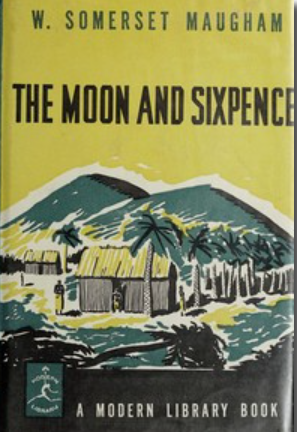|
admin 2025-3-2 11:55:25

The Moon and Sixpence★★★★★
9
Maugham, W. Somerset・・Ended
Updated: August 29, 2017
Content length: 138 pages
language: English
Source: amazon
9
Score
5★
8%
4★
25%
3★
33%
2★
8%
1★
25%
Synopsis
The book is written largely from the point of view of the narrator, a young, aspiring writer and playwright in London. Certain chapters entirely comprise accounts of events by other characters, which the narrator recalls from memory, selectively editing or elaborating on certain aspects of dialogue, particularly Strickland\'s, because Strickland is said by the narrator to have a very poor ability to express himself in words. The narrator first develops an acquaintance with Strickland\'s wife at literary parties and later meets Strickland himself, who appears to be an unremarkable businessman with no interest in his wife\'s literary or artistic tastes. Strickland is a well-off, middle-class stockbroker in London, sometime in the late 19th or early 20th century. Early in the novel, he leaves his wife and children and goes to Paris. The narrator enters directly into the story at that point, when he is asked by Mrs Strickland to go to Paris and talk with her husband. He lives a destitute but defiantly contented life there as a painter, lodging in run-down hotels and falling prey to both illness and hunger. Strickland, in his drive to express through his art what appears to continually possess and compel him on the inside, cares nothing for physical discomfort and is indifferent to his surroundings. He is helped and supported by a commercially successful but hackneyed Dutch painter, Dirk Stroeve, coincidentally, also an old friend of the narrator, who recognises Strickland\'s genius as a painter. After helping Strickland recover from a life-threatening illness, Stroeve is repaid by having his wife, Blanche, abandon him for Strickland. Strickland later discards the wife, because all he really wanted from Blanche was for her to be a model to paint, not a serious companion. It is hinted in the novel that he indicated that to her, but she took the risk anyway. Blanche then dies by suicide. She is another human casualty in Strickland\'s single-minded pursuit of art and beauty, the first casualties being his own established life, and those of his wife and children. After the Paris episode, the story continues in Tahiti. Strickland has already died, and the narrator attempts to piece together his life there from recollections of others. He finds that Strickland had taken up with a native woman, had two children by her (one of whom died), and started painting prolifically. We learn that Strickland had settled for a short while in the French port of Marseille before traveling to Tahiti, where he lived for a few years before dying of leprosy. Strickland left behind numerous paintings, but his magnum opus, which he painted on the walls of his hut before losing his sight to leprosy, was burnt by his wife after his death, as per his dying orders.
| |